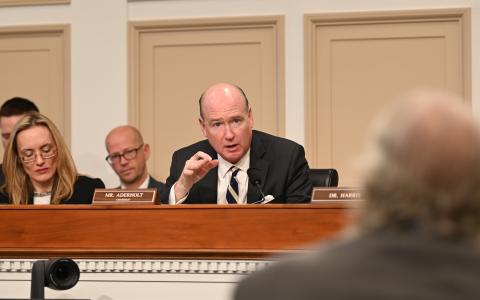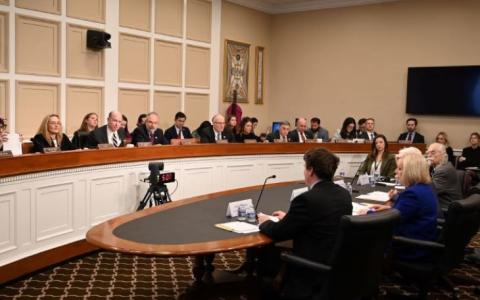Hearing Recap: Appropriators Examine Education Innovation, Workforce Preparedness
Washington, D.C. – Hearing Recap: The House Appropriations Committee recently examined how American schools and businesses support career preparation and student workplace success. Led by LHHS Subcommittee Chairman Robert Aderholt (R-AL), members investigated how to best use federal resources to prepare American students and job seekers for career success.

LHHS Subcommittee Chairman Robert Aderholt (R-AL) stated, “Financing higher education – for both the federal government and the individual – is a significant investment. Borrowers expect it to be worth it on the other side of graduation, with expanded job opportunities and higher pay, but that is only one side of the equation. Taxpayers also deserve to know their money is being well spent.”
Attention was also drawn to the nation’s graduation rates. “The overall six-year graduation rate in 2024 was about 61 percent, this means nearly two in five students who enrolled in 2018 did not finish within six years,” said Aderholt. “These rates are unacceptable – we can and should be doing better for our students.”
Preston Cooper, Senior Fellow at the American Enterprise Institute, shared that the federal government has “few quality controls to ensure that institutions deliver the [return on investment] that students and taxpayers ought to expect from postsecondary education.”
In discussing cost-effective career preparation, he continued, “[We] know that at community colleges the percentage of students who take out student loans is far lower than it is at 4‑year institutions. And so, if we want to get students into the workforce quickly with a minimal amount of debt… shorter‑term programs that are often offered by community and technical colleges, which lead directly to a pathway into the labor force, are the best way to do it.”

Dr. Vicki Karolewics, President of Wallace State Community College, described initiatives to improve student retention, graduation, and other outcomes. In response to a question regarding workforce demands, she said, “We have national and local labor market data… so we look at professions that are contracting, professions that are growing, the high-wage, high-demand professions, and we make sure our programs are aligned with that.”
Dennis Parker, Regional Talent Development Consultant for Toyota Motor North America, described the Federation for Advanced Manufacturing Education (FAME) program, which was created by Toyota to develop “globally competitive entry-level maintenance technicians for manufacturers.” What began at one school has been expanded to “16 states with over 45 participating colleges and over 450 company partners.”
He underscored the employer role in preparing students for the workforce. “Where you have employers leading the activity…they are helping to make things happen… With that employer engagement… you will have better communication between them and education. That, in turn, will produce stronger programs, better prepared students, and that will complete a cycle into the place of work where they will produce better work with stronger outcomes,” reiterated Parker. “Good for the American economy, good for the local economy.”
Additionally, participating lawmakers asked questions regarding the Pell Grant program, technical training and education, industry needs and workforce gaps, data-driven policies that support graduation rates and job placements, and state programs that support skilled trades and vocations.
Subcommittee Chairman Aderholt’s full remarks as prepared for delivery are available here.
###
